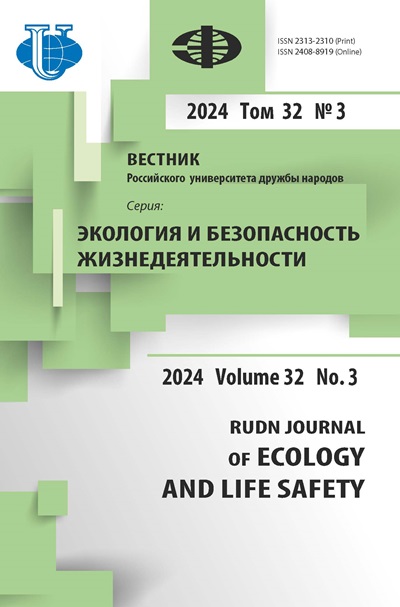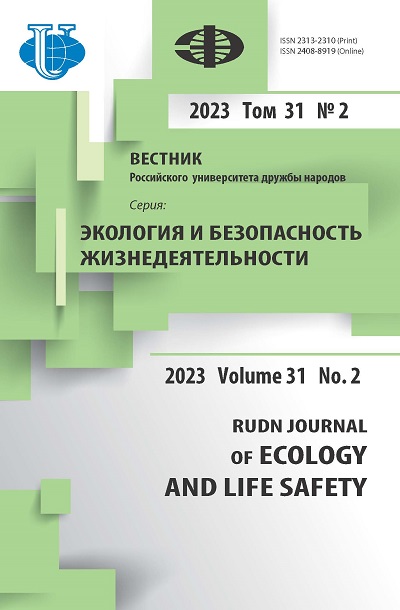Special aspects of ecosystem recreation in the area of dumps of sub-standard zeolite-containing rocks of Holinsky deposit of Eastern Transbaikalia
- Authors: Obuzdina M.V.1, Rush E.A.1
-
Affiliations:
- Irkutsk State Transport University
- Issue: Vol 31, No 2 (2023)
- Pages: 191-200
- Section: Ecology
- URL: https://journals.rudn.ru/ecology/article/view/35400
- DOI: https://doi.org/10.22363/2313-2310-2023-31-2-191-200
- EDN: https://elibrary.ru/VLNQSL
Cite item
Full Text
Abstract
The research presents the problem of liquidation of dumps of substandard raw materials of zeolite-containing rocks of the Holinsky deposit, measures for the reclamation of disturbed lands. The most effective way to restore ecosystems is renaturation. Time intervals of succession are considered. Renaturation of disturbed lands consists of 6 stages. Possible dominant plants for the proposed options are considered in detail: Stipa lessingiana, Poa platensis, Festuca valesiaca, Poa angustifolia, Elytrigia intermedia, Artemisia vulgaris, Trifolium pratense , Trifolium repens, Agropyron desertorum.
About the authors
Marina V. Obuzdina
Irkutsk State Transport University
Author for correspondence.
Email: obuzdina_mv@mail.ru
ORCID iD: 0000-0002-4956-0063
Candidate of Technical Sciences, Assistant Professor of Academy Department of Technosphere Safety
15 Chernyshevsky St, Irkutsk, 664074, Russian FederationElena A. Rush
Irkutsk State Transport University
Email: lrush@mail.ru
Doctor of Engineering Sciences, Professor, Head of Academy Department of Technosphere Safety 15 Chernyshevsky St, Irkutsk, 664074, Russian Federation
References
- Zhu Z-Y, Alimujiang K. Analysis and simulation of the spatial autocorrelation pattern in the ecosystem service value of the oasis cities in dry areas. Journal of Ecology and Rural Environment. 2019;(35)12:1531–1540. https://doi.org/10.19741/j.issn.1973-4831.2019.0331
- Obuzdina М, Rush E. Intensification the features of interaction between components of pollutants of industrial waste waters with modified zeolites based on the results of integrated physical and chemical researches. Ecology and industry of Russia. 2021;25(3):36–40. (In Russ.) https://doi.org/10.18412/1816-0395-2021-3-36-40
- Androkhanov VA, Dvurechensky VG. Problems of reclamation of technogenic ecosystems of the Krasnoyarsk Territory. Bulletin of the Irkutsk State University. Series “Biology.Ecology”.2013;(2)6:153–158. (In Russ.)
- Greg S, Sing K. Adsorption, surface area, porosity. Moscow, Mir; 1987. (In Russ.)
- Bespolitov DV, Pankov PP, Konovalova NA, Koryakina EA. Establishment of the environmental safety of a stabilizing additive for solving the problem of dusting of overburden dumps. Questions of modern science and practice. University. V.I. Vernadsky. 2022;(84)2:15–24. (In Russ.) https://doi.org/10.17277/voprosy.2022.02.pp.015-024
- Matinde E, Simate GS, Ndlovu S. Mining and metallurgical wastes: A review of recycling and re-use practices. Journal of the Southern African Institute of Mining and Metallurgy. 2018;(118)8:825–844. http://dx.doi.org/10.17159/2411-9717/2018/v118n8a5
- Strekalova TA, Merenkova ES. Measures that reduce the harmful effects of dumps on the environment. Successes of modern natural science. 2013;(4):118–121. (In Russ.)
- Goleusov PV, Lisetsky FN, Chepelev OA. Ecological restoration of post-industrial dumps of the iron ore industry of the KMA. Problems of regional ecology. 2005;(6):130–137. (In Russ.)
- Konovalova NA, Dabizha ON, Pankov PP, Rush EA. Minimizing the anthropogenic impact on the environment of mining waste through their disposal in cement soils modified with natural zeolites. Ecology and Industry of Russia. 2020;(24)6:24–30. (In Russ.) https://doi.org/10.18412/1816-0395-2020-6-24-29
















